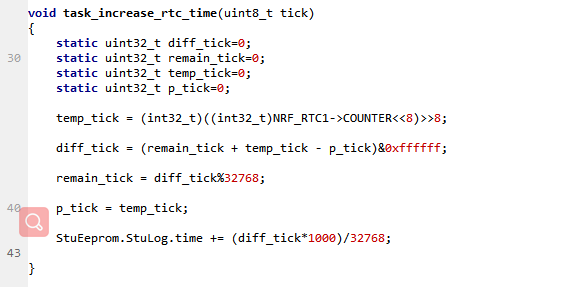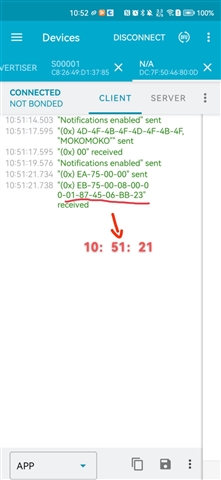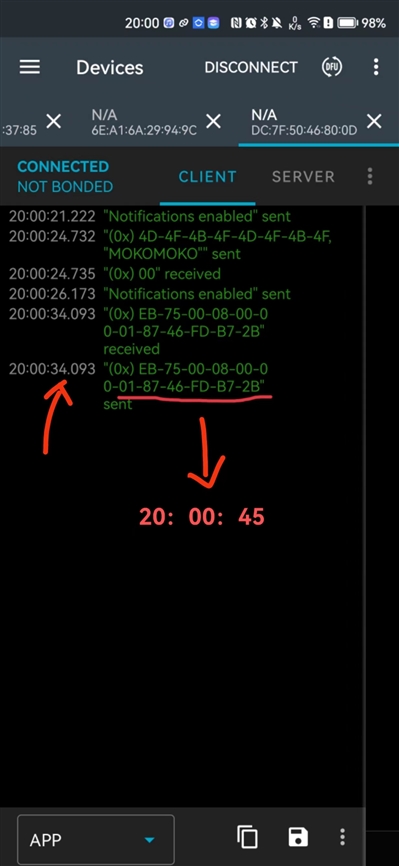Hardware: The chip is 52832, the low-frequency crystal frequency is 32.768kHz, and the crystal precision is ±20ppm
Our application is to make a second level timestamp (Unix timestamp)function, it can synchronize the time through the phone. I start a 1-second app timer and increment the timestamp by 1s as every second time out. The code is as follows

Test procedure: Synchronize the time at a point where the phone time is consistent with the firmware timestamp. After running 9 hours, the firmware timestamp is read from the mobile phone. The time when the firmware is read is displayed on the log. The firmware time is 11s faster than that of the mobile phone.We want to know what causes this.



